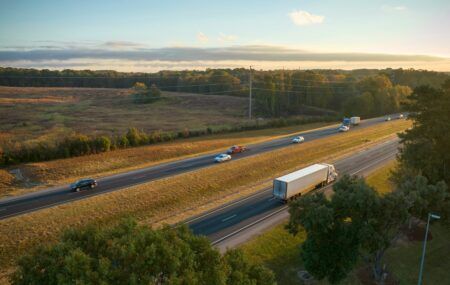According to the UK’s Transport Systems Catapult (TSC), integration into the wider transport network is the key to the future development of low carbon vehicles.
The TSC will highlight how emerging technologies and business models will enable new ways of reducing transport emissions, both at the vehicle and system level, at the Cenex Low Carbon Vehicle Event (LCV2016) on September 14-15, at Millbrook Proving Ground in the UK. According to the government-funded organization, ride-hailing apps, car clubs, and energy sharing technology are blurring the lines between private ownership and public transport, opening the door to system wide management of congestion and emissions. Meanwhile, connected and autonomous vehicle (CAV) technology will enable more emission reductions by removing the unpredictable influence of the driver. Localized modelling of pollution will ensure that any potential increase in freight and passenger travel does not adversely affect overall emissions.
Looking ahead, the TSC will highlight the emergence of ‘Mobility-as-a-Service’ (MaaS), which will incorporate traditional cars, driverless vehicles, and public transport, into a service contract. Such arrangements will be tailored to the individual traveler and could replace vehicle ownership. The TSC is creating a shared vision of the future of transport, through its ‘Technology Strategy for Intelligent Mobility’, which will ensure that UK government, industry and academia can better coordinate their efforts and capture more of the opportunities available. This strategy has recently been updated with a set of technology road maps that will be explored during LCV2016.
“At the TSC we believe we are at the beginning of a transport revolution, where the way people choose to use transport is changing,” explained the TSC’s CEO, Steve Yianni. “For those involved in Low Carbon Vehicle development this offers some exciting opportunities. Electric Vehicles in particular are well suited to the sharing economy and would benefit from automation and connected fleet management. Combining these vehicles into a flexible public transport system is the logical next step, given the success of ride-hailing apps and changing expectations of the travelling public; the challenges and opportunities these present need to be explored. A shared vision is required between all modes of transport, in order to ensure we gain maximum benefits from any future developments.”
Cenex-LCV 2016 is the UK’s leading low carbon vehicle event and features a technology exhibition, seminars, and opportunities to drive the latest low carbon and ultra-low emission vehicles (ULEVs). All the major motor industry manufacturers and players will be at the event, which is expected to attract 3,000 delegates. The event will feature the UK public funding organizations supporting development of low carbon vehicles including: Innovate UK and the TSC, Advanced Propulsion Center (APC) and its ‘spokes’ communities, the Automotive Council, Centre for Connected and Autonomous Vehicles (CCAV), Department for International Trade, Low Carbon Vehicle Partnership, and the Office for Low Emission Vehicles (OLEV).




